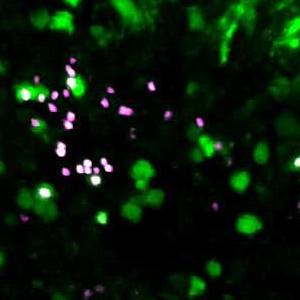-
Sharing Mayo Clinic: ‘Divine design’ gives multiple myeloma patient transplant, care at home

Ann Arneson describes her journey to Mayo Clinic as “divine design.”
Ann — a retired teacher, a leader in her church and ministry, mother, grandmother, and line dance enthusiast — is Mayo Clinic’s first bone marrow transplant patient to recover at home thanks to the new advanced care at home program.
“I know that people and circumstances are not by chance, but for a purpose — part of a bigger plan,” says Ann.
A brush with death and devastating news
Ann was living in California with her husband, Don, in March 2019 when she received a devastating diagnosis: She had multiple myeloma, a cancer that forms in a type of white blood cell called a plasma cell.
“We were going in for a routine doctor’s appointment and getting our labs,” says Ann. “They called me that night and told me to get to the hospital first thing in the morning.”
Ann was quickly admitted to the hospital where she received her life-changing cancer diagnosis. But her battle was just beginning. Two months into her chemotherapy treatments, she contracted pneumonia and cellulitis, a potentially serious bacterial skin infection.
“I ended up going into respiratory arrest,” says Ann. “My friend called 911. In the ambulance I understand I quit breathing and they had to revive me.”
Ann and her husband knew they needed more support — and they knew where to go. The couple, who had discussed moving to Florida in the future for long-term health care needs, say they hadn’t imagined the need would be so immediate. They packed their belongings and relocated their life to Jacksonville.
“I knew I needed to be here at Mayo Clinic,” says Ann.
Stem cell transplant offers hope
Ann continued chemotherapy to treat her multiple myeloma as well as radiation to treat a lesion at the base of her skull.
A year later, in March 2021, a scan showed the cancer had jumped from her bone and bone marrow to soft tissue. She had a tumor in her small intestine. Ann underwent abdominal surgery to remove the cancer and then met with Vivek Roy, M.D., a hematologist-oncologist, who specializes in treating patients with blood cancers, including multiple myeloma.
“That’s when I found out about the option for a bone marrow transplant,” says Ann.
Dr. Roy shared that Ann was a candidate for autologous stem cell transplant, a procedure that replaces damaged blood-making cells with the patient’s own healthy cells.
Option to recover at home – “Somebody was always there”
In addition, Dr. Roy gave Ann more good news. She had the opportunity to recover at home as part of Mayo Clinic’s advanced care at home program, a model that takes the care provided in the hospital setting and brings it to the patient in the comfort and safety of their own home.
“Dr. Roy felt I was a good candidate, and I said, ‘Absolutely!’ I’m just comfortable at home,” says Ann, who underwent a successful transplant in June 2021 and became the first bone marrow transplant patient to participate in the care at home model.
Ann was able to reduce her inpatient hospital stay by 14 days — time she was able to spend with her husband and recover in the comfort of her own home.
“Ann met advanced care at home criteria as she lived within the radius of our command center in Jacksonville, had inpatient hospital care and monitoring needs we could implement safely in her home with close coordination with our BMT colleagues, and had strong social support with her caring husband,” says Gautam Matcha, M.D., one of the medical directors for the advanced care at home program. "I think this allowed her to thrive in the ‘hospital at home.’ The advanced care at home team was enthusiastically supporting her through this phase of her journey.”
Ann had 24/7 access to Mayo Clinic providers through various technology components, including a tablet and a “life alert” device similar to a watch that can initiate an emergency two-way voice communication with the command center. Under the direction of her physician team, she received skilled nursing care, remote monitoring, and other essential services from a network of EMTs, nurses and medical technicians. Everything was set up, connected, and tested in advance.
“It was very easy,” says Ann. “I had the help button by my bed. I wore the watch so all I had to do was hit that and it would dial the care team directly. We used the iPad at least every four hours, sometimes more often. I had a care team member right there, and I could show them what was going on. Somebody was always there.”
Grateful to have more time
As she nears 100 days post-transplant, Ann will have another bone marrow biopsy and will be able to receive vaccines to bolster her immune system, giving her the ability to return to doing the things she loves.
“I can’t wait to get back out and be involved in the community, go for walks, and get back to line dancing and teaching Bible study,” says Ann. “I want to see my grandkids grow up. I have more to do in this life.”
Ann says she hopes her journey will help pave the way for more people to benefit from advanced care at home.
“I want to encourage people and give them hope,” says Ann. “I’m just so excited about life. I knew this was what I needed to do, and I never looked back. I am so grateful to have more time.”
Learn more:
- Multiple myeloma care at Mayo Clinic
- Research information related to multiple myeloma
- Bone marrow transplantation information
- Mayo Clinic Platform program
- Request an appt with the cancer center







